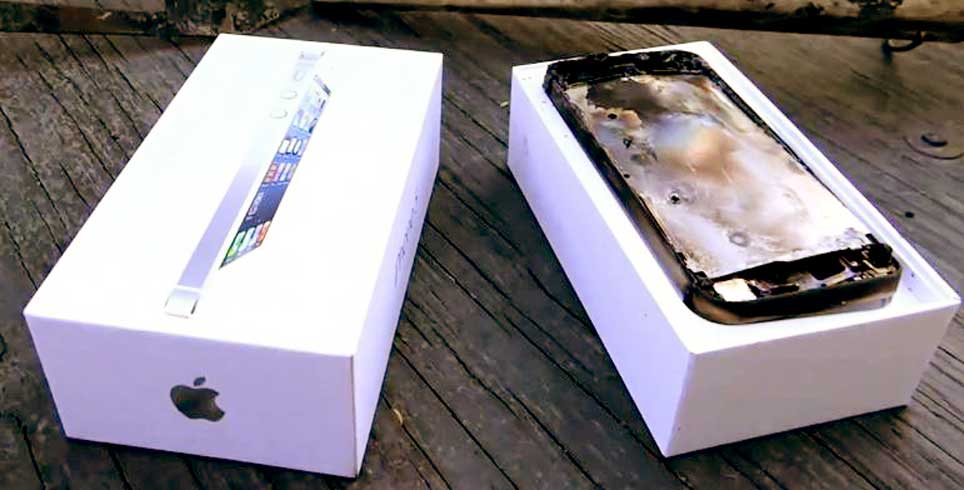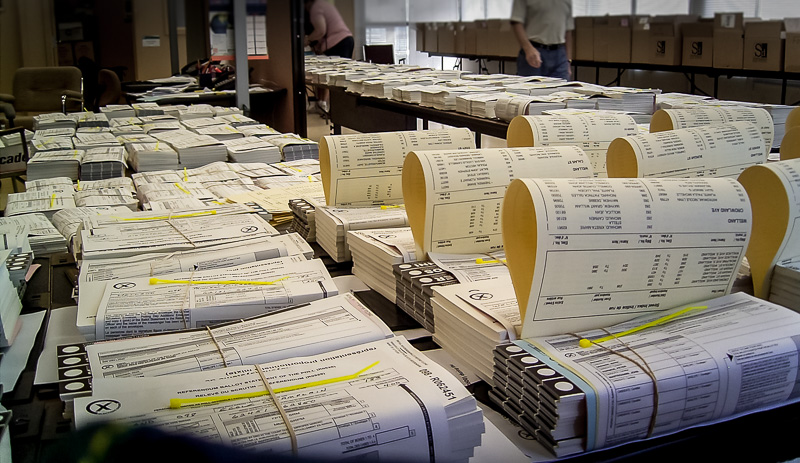The 2007 provincial election was a lot of fun for me. As we are rapidly approaching another election I thought an insight behind the scenes could be interesting. After being duly sworn in in August 2007, I and my IT Coordinator colleagues went through some intensive residential training before being released back into our respective communities. Shuffling back home with our 600 page manuals, we were tasked with managing the electoral database, computer systems, security, and the data entry teams for our respective Returning Offices. In my case, that meant the Welland Riding, at the Returning Office on Hagar Street.
Here are some bullet points.
Ontario is broken down into 107 Ridings, Welland being one. Multiply everything from here on by 107 and you begin to get some idea of the sheer scale of a provincial election. And Ontario is only one Province. Think Federal…
In Ontario alone the Electoral database contains over 8.3 million names, addresses and dates of birth. 82,537 of them lived at that time in the Welland Riding. Since the last election people have moved, died, married, divorced, and come of age. New streets and subdivisions have been built, demolished, renamed or merged. Boundaries have moved. All this needs adding, updating, verifying, and cross-checking. Electors then need to be allocated to polling stations and voting cards must be issued. 12 hours per day, 7 days per week, I and my team worked diligently for two months to get as much done as we could in that time and fix some of the problems we encountered. Data entry was a moving target, the forms change several times at each stage of an Election. They did extremely well and I was very proud of them. Thanks, guys.
I trained the management team and data entry staff on the computer systems, made sure everything was hooked up and kept working, monitored security and oversaw data entry, as well as verifying and reporting back to Elections Ontario, liaising with candidates and printing out the actual ballots. Beyond my scope, all field revision staff and more than 1000 polling day officials plus emergency standbys were trained in shifts, including weekends and evenings.
 Over 70 venues played host to 283 polling stations. Leases must be signed for each. All need insurance. Furniture. Staff. Training manuals, ballot boxes, maps, direction signs, braille guides, magnifying lenses, sealing envelopes and stationery, toiletries…The simple truth is the logistics involved are phenomenal. From the first delivery truck to the last that collects everything for return to Toronto, this is one hell of a roller coaster ride.
Over 70 venues played host to 283 polling stations. Leases must be signed for each. All need insurance. Furniture. Staff. Training manuals, ballot boxes, maps, direction signs, braille guides, magnifying lenses, sealing envelopes and stationery, toiletries…The simple truth is the logistics involved are phenomenal. From the first delivery truck to the last that collects everything for return to Toronto, this is one hell of a roller coaster ride.
Advance Polls were open at 7 locations for 13 days. Over 100,000 Ballots were secured in my locked office, one per Elector (you are not a Voter until you have actually voted). Every sequentially numbered piece of paper had to be signed and accounted for both in, out and on return to the building on Election Day. Times two: We had a referendum, so double the ballots. And don’t get me started on the amount of printing we did. Daily reports, internal memos, bulletins, candidate materials, Lists of Electors…not including what was farmed out locally. Two printers went through 7 cartridges between them and a small forest of paper.
If you wondered why you didn’t vote where you used to vote, here’s your reason. Elections Ontario Geography Division works year round to keep their maps up to date, right down to house and lot numbers for every street and road. Polling boundaries are allocated by population density. As population density changes, so do the boundaries. We aim for an optimal 350 electors at each polling station. That’s a manageable number for officials and venues, and you don’t have to queue around the block as you would if there were 3,500 instead. If a new condo or subdivision was built, that may get you bumped into the next polling station over, to balance the numbers as best we can. Balancing the numbers and allocating electors to polling stations was another job for my team and I. Blame me, I verified the data. I crunched the numbers. I allocated. I sent out the voting cards.
On Election Day everyone is at battle readiness. From 6:30 a.m. the polling stations are preparing. All are coordinated through the Returning Office and checked off on a screen as they announce they are ready to open the doors. We have teams of trained standbys on call to cover any last minute staffing problems: If we don’t have a full staff we cannot legally open the doors. Tension mounts as drivers are despatched to ferry replacement staff around the region as needed. Eventually, we have green lights across the board. We’re ready. And the doors open.
Calls come in throughout the day as issues arise. People go to the wrong polling station. Some are not on the voters list. Some live in Windsor but want to vote here. Some didn’t bring their voters card and have to be looked up in the huge Provincial electoral list printout which each polling station was issued with. Some didn’t even bring their ID and are turned away. Why? Because every year some people try to vote at multiple locations, and we’re ready for that, too. Everything has been prepared for, as much as humanly possible. The day winds on and we weather the storm, running on pure adrenaline. By the end, we’re all dead on our feet. But when the polls close, that is when it gets really interesting.
The ballot boxes are locked, tagged, and thrown into vehicles before everyone heads back to base at top speed. In case you ever wondered why it is called the Returning Office, now you know. All ballot boxes return here. The polling station staff can go home now, their work is done. Most, however, stay for the main event. The count.
Ballot box seals are confirmed untampered, then passed to waiting teams of ballot counters. Each ballot in each box is counted and results tallied and totalled. That box is passed to another team, and they recount it. If the numbers match, it is considered a good count and they go to the next box. If not, they do it again. And again, if necessary.
Once verified, the counts are passed to the Results Entry team that I hand-picked. Five individuals, their job is to enter these numbers to a database and cross-check until all polling stations and their counts are accounted for. We have our own dual-entry verification process, and I check the numbers myself for triple-redundancy. If the numbers add up, we move on. If not, we do it again. And again.
While we were collating the early counts I had to physically throw an over-inquisitive journalist out of my office. He was lucky I was in a good mood, I could have had him arrested. Literally. I considered it. The candidates representatives and every media outlet in the region were on the phones every few seconds. Everyone wanted an early indication of how things were going. The runners were dashing backwards and forwards with slips of paper. Ballot boxes and ballots were flying around like an explosion in a paper factory. The place was generally in quietly frantic uproar. Organized chaos.
Instead, I locked the office door and only let in the runners bringing me the results, after having given strict instructions not to speak to or even glance at any of the massed journalists. As fast as counts came in they were entered, checked and rechecked until all polling stations but one were accounted for: The ballot counters couldn’t agree and were on their fourth recount. And that’s fine. We want it to be right. And, eventually, it was. We were there until 1:30 a.m. before I could confirm the final results and pass them to the Returning Officer, who announced the initial results to the waiting media and assembled election workers.
The next day, per election rules, we did another recount to confirm the preliminary results. I am pleased to say they matched exactly, well done my team. The official results were announced at 1:00 p.m. that day and were co-signed into the history books by the Returning Officer and I. Peter Kormos had won by a clear margin.
Post-election clean up takes another couple of weeks, give or take. It involves taking all the issues encountered on Election Day (people who had died, immigrated, emigrated, married, moved or come of age during the election, for example) and updating the electoral database one final time before uploading it to Elections Ontario on Rolark Drive, a task which is done in every Riding across Ontario as the closing act of an election.
And then the trucks arrive. The furniture is returned first. Most of it was on loan or hired locally. The tables and chairs, the desks and kitchen equipment. The computer equipment goes into a specially built trunk, roughly ten feet by four by three. All the data entry workstations, the laptops, the printers, the cabling, the manuals, the network equipment. The equipment fills the trunk neatly: It was custom-built to fit neatly. The trunk is locked one last time by me, and the driver signs for trunk and key before all three go up the loading ramp together. All that equipment still contains software and confidential information which needs to be securely wiped when it gets back home.
But that is a job for someone else. My job is done. Time for me, too, to go home.
 With great computing power comes a small requirement for some personal responsibility. Also, there is an expectation that owners will have a certain amount of basic technical knowledge. After all, you can’t realistically just walk in to a store and walk out with a hideously complex and expensive piece of modern technology and start waving it around in the parking lot. Oh. Wait. You can.
With great computing power comes a small requirement for some personal responsibility. Also, there is an expectation that owners will have a certain amount of basic technical knowledge. After all, you can’t realistically just walk in to a store and walk out with a hideously complex and expensive piece of modern technology and start waving it around in the parking lot. Oh. Wait. You can.

